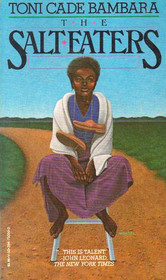 You want a little fun in your sci fi? Of course you do. Who doesn’t. And here we have a whole planet full of dead bodies. What could be more fun than that?
You want a little fun in your sci fi? Of course you do. Who doesn’t. And here we have a whole planet full of dead bodies. What could be more fun than that?
Harvey Crane is the caretaker on a planet full of graves and mausoleums. In fact
he was the lone inhabitant in the food court structure built to hold at least a thousand people, with a visitor center, souvenir and snack shops, several mausoleum levels, a nondenominational temple, a space elevator, and vacuum tube train lines circumnavigating the planet.
Here’s the deal. With billions on Earth dying, where oh where can we put them? Stack them up like firewood? No. Of course not. Now if it were me running the show, I would have required cremation for all, damn the pollution from the burning, but no, this bunch decides that shouldering the expense of building a high tech funeral parlor on some far away planet is the way to go.
Mourners by the hundreds used to flock to the planet to pay their respects. Heck, they had holographic displays wherein the deceased would appear at the grave with a message for the loved ones. How cool is that? But almost no one came anymore. Not for 50 years or so. So DeepSix, the holding company, now had only one caretaker a tour, each tour lasting a year.
Harvey Crane was bored. He was not bothered by the isolation or being the only one there, well the only live one there. He played video games and generally was able to amuse himself pretty well. But he got this idea to upgrade an AI with all kinds of features so it was like having a companion. Who seemed to be getting smarter and smarter, and more and more independent.
One evening, Harvey gets a signal from the security system that something is amiss in a far section. So he gets on the train and after quite some time, arrives at the trouble spot, to see a hologram playing. What the deuce? You have to push a button to start them up. And there is no sentient life on this planet, except him. He asks the system computer to scan for sentient life. Nada. Scan for any movement. Nada again. Hmmm, thought Harvey. In all the time he has been on duty, there has never been an incident. OK, maybe the mechanism is on the fritz, seeing how this place is centuries old. He, being a mechanic, checks it all over, can’t find anything wrong, shrugs his shoulders and goes back to his station and the chess game with his AI.
A few days later, another trouble signal shows. This time to a really far away section, one to which Harvey has to take the planet train. Again, no sign of any problems, except for the hologram playing in which the deceased is ranting about how his heirs are going to receive NOTHING, NOTHING. hahaha.
I bet you are dying to know what is going on, right? (See what I did there?) Well, I am not going to tell you, but rest in peace knowing (I did it again. I can’t help myself) that it is a doozy. One thing I like about sci if and speculative fiction are the creative and unusual ideas, and a planet that serves solely as a burial ground is certainly interesting, you must admit.














